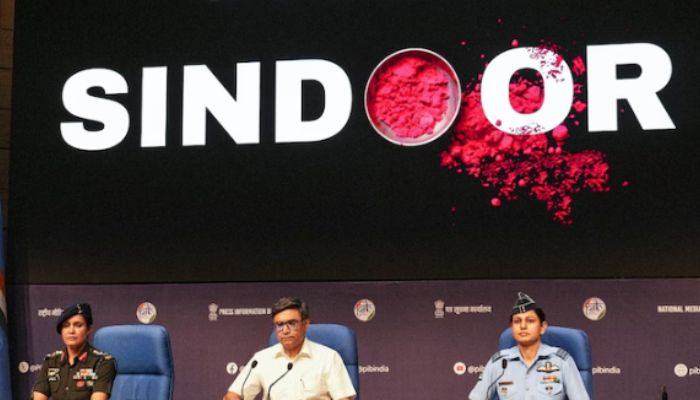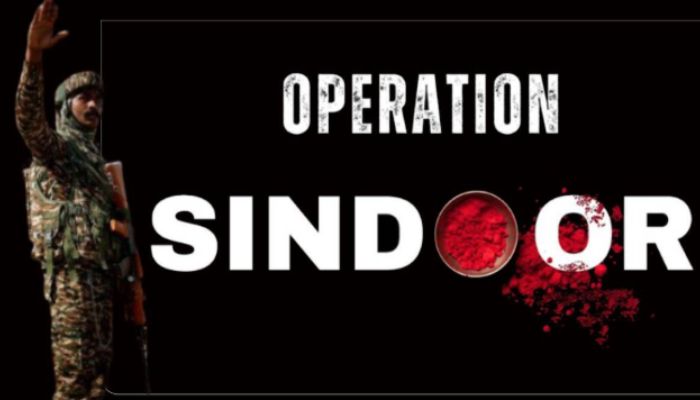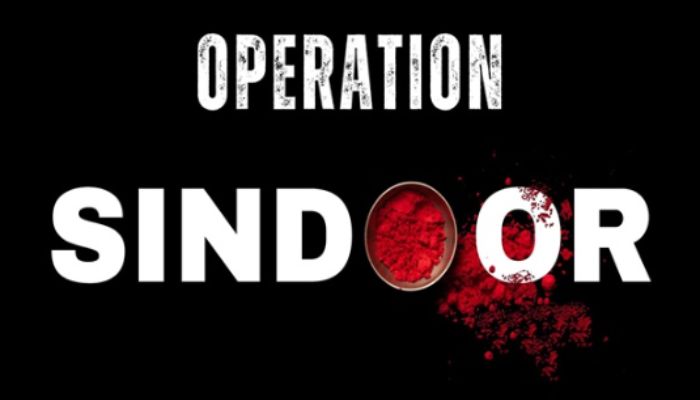India’s reaction to the Pahalgam terror attack had to be assertive, making it necessary to carry out Operation Sindoor: surgical strikes against terror camps in Pakistan and PoK. Conducted during the predawn hours of a Wednesday, these strikes let the world know:
How firmly India stands against cross-border terrorism, however, efforts were placed to ensure that this issue would not escalate any further.
NSA Ajit Doval communicated to his foreign counterparts that India did not want to increase tension but was ready for all contingencies. The government has also convened an all-party meeting on the subject.

Operation Sindoor: Key Highlights
- Targeted Strikes: Indian Armed Forces destroyed 9 terror camps linked to Lashkar-e-Taiba (LeT) and its offshoot, the Resistance Front.
- Proof of Pakistan’s Involvement: Foreign Secretary Vikram Misri presented evidence connecting the Pahalgam attack to Pakistan-based terror groups.
- Visual Evidence Released: Colonel Sofiya Qureshi shared footage of the destroyed terror training facilities, including sites where Ajmal Kasab and David Headley were trained.
- Pakistani Retaliation: Reports indicate that Pakistani forces targeted civilian areas in response, escalating tensions.
Why Operation Sindoor Was Launched
The act of terror in Pahalgam, undertaken by the Resistance Front, led to civilian and security personnel casualties. It is said to have been linked and controlled by LeT, a Pakistan-sponsored terrorist organization.
India’s surgical strike under Operation Sindoor aimed to:
- Neutralize active terror launchpads in PoK and Pakistan.
- Send a strong message that India will not tolerate terrorism.
- Avenge the victims of Pahalgam and deter future attacks.

India’s Diplomatic & Military Strategy
NSA Ajit Doval held meetings with his international counterparts, emphasizing that India acted defensively and against terror hubs specifically. The government has also called for an all-party meeting in order to present a united front.
Key Statements from Officials
- Foreign Secretary Vikram Misri: “The Resistance Front is a front for LeT, proving Pakistan’s role in the Pahalgam attack.”
- Colonel Sofiya Qureshi: “We have irrefutable evidence of terror training camps destroyed in the operation.”
- Defense Minister: “India is prepared for any scenario but seeks peace.”
Global Reactions & Next Steps
- US & UK: Urged restraint from both India and Pakistan.
- UN: Called for de-escalation and dialogue.
- Pakistan’s Response: Denied terror links but vowed retaliation.
What’s Next?
- All-party meeting to discuss further strategy.
- Diplomatic efforts to prevent full-scale conflict.
- Heightened vigilance along the LoC and International Border.
Conclusion
Operation Sindoor underscores India’s zero tolerance policy towards terrorism while demonstrating military precision and restraint. As the situation evolves, India remains prepared yet unwilling to escalate unnecessarily. The world watches closely as diplomatic channels work to prevent further conflict.
People Also Ask
1. What was Operation Sindoor?
Operation Sindoor was a precision military strike conducted by the Indian Armed Forces against terrorist camps in Pakistan and Pakistan-occupied Kashmir (PoK). It was a direct response to the Pahalgam terror attack, which was orchestrated by Pakistan-based groups like Lashkar-e-Taiba (LeT) and its offshoot, the Resistance Front.
2. Why did India launch Operation Sindoor?
India carried out the operation to:
- Neutralize active terror launchpads used for cross-border attacks.
- Avenge the victims of the Pahalgam attack.
- Send a strong message that India will not tolerate terrorism sponsored from Pakistani soil.
3. What evidence did India provide against Pakistan?
- Foreign Secretary Vikram Misri revealed intelligence linking the Resistance Front to LeT, proving Pakistan’s involvement.
- Colonel Sofiya Qureshi released video evidence of destroyed terror camps, including sites where 26/11 attackers like Ajmal Kasab were trained.
4. How did Pakistan respond to Operation Sindoor?
Pakistan denied hosting terror camps but retaliated by shelling civilian areas near the Line of Control (LoC), escalating tensions. Global powers like the US and UK urged restraint from both sides.
5. What is India’s current stance after the operation?
- NSA Ajit Doval stated India has “no intent to escalate” but remains fully prepared militarily.
- An all-party meeting has been called to ensure national unity.
- Diplomatic efforts are underway to prevent further conflict.











